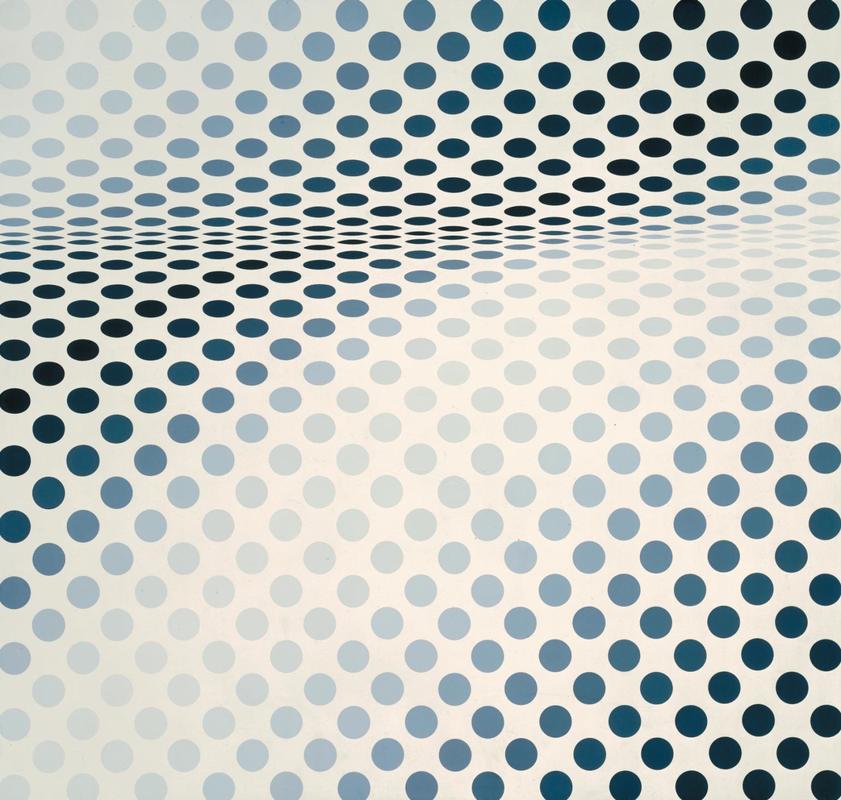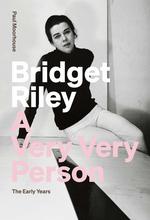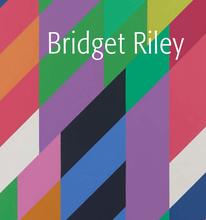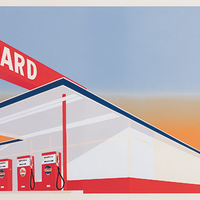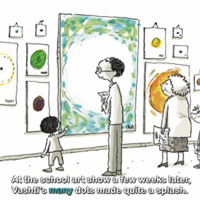More about Hesitate
- All
- Info
- Shop

Contributor
Bridget Riley’s Hesitate captures what the post-war world of the 1960s needed: a change in perception.
The 1960s were a time of great cultural shifts. The ripple effect of World War II was starting to wear off, baby boomers were on the rise, and an overthrow of traditional values was on the horizon. While the American hippie movement tends to dominate the minds of people reminiscing about this era, the swinging sixties in London embraced their time to push for a cultural revolution. Rigid British society with their traditional values was out and hedonism was in. Youth culture and creativity flourish, and of course, drugs ran rampant. The Beatles were running around talking some trippy hippie LSD induced goodness, fashion boasted their new styles through icons such as Twiggy, and worry not, the fine arts had their thing too: Op Art.
Op Art is simple enough, it is geometric abstraction of a simple pattern. This art utilizes stark contrasting color between the foreground and the background to create an environment that tricks the mind. It was the artist's way of playing with perception with the goal of mindf*****g its viewer and probably straining their eyeballs a bit too. This mind altering art quickly became appropriated into the LSD fueled sixties, and there is no doubt that Riley is this movement's star pioneer.
Riley’s new innovative art form was eaten up by modern culture. Museums were not the only ones vying for a piece of Bridget’s creations, the fashion and music industries were equally as smitten. Fashion companies started lifting her designs and slapping them on all types of clothing. Needless to say, this did not sit too well with Riley. She describes seeing her work as being “vulgarized in the rag trade.” This did not stop people from commercializing and reppin' this new op-art movement and musicians such as Keith Moon from The Who rocked this eye-popping style unforgivingly.
While the 60s may seem like forever ago, the contemporary art world has not lost their taste for Riley’s work. In fact, over the last twenty five years alone, her work has increased in value over 25, 500%! So while it may not be commonplace for people to adorn themselves in Riley inspired clothing anymore, there is no lack of a desire for wealthy collectors to fill their homes with her mind-bending work. Surely the Tate is pleased with having acquired this classic op-art piece in the 80s before the price tags on her work became as mind-boggling as the art itself.
While this explosive success would have most budding artists feeling like they hit the proverbial gold mine, Riley on the other hand has felt that the 60s culture pigeonholed her and in turn, she will never be seen as the complex artist that she is. Maybe she warped the perception of her followers with one too many mind tricks, but it seems to me, that people will always think of Riley as the chick who visualized what the sixties was all about.
Sources
- Graham-Dixon, Andrew. "ART / Earning her stripes: Like many abstract artists, Bridget Riley believes that her work has been misinterpreted. She talks to Andrew Graham-Dixon." The Independent. September 07, 1992. Accessed August 10, 2017. http://www.indepe
- Kozak, Kaja. "15 Things You May Not Have Known About Bridget Riley." Culture Trip. September 20, 2015. Accessed August 10, 2017. https://theculturetrip.com/europe/united-kingdom/england/london/article….
- "Op Art Movement, Artists and Major Works." The Art Story. Accessed August 10, 2017. http://www.theartstory.org/movement-op-art.htm.
- "Op Art in Fashion and Design." Op-Art.co.uk. Accessed August 10, 2017. http://www.op-art.co.uk/op-art-fashion/.
- Wakefield, Thirza. "10 great films set in the swinging 60s." British Film Institute. April 13, 2017. Accessed August 10, 2017. http://www.bfi.org.uk/news-opinion/news-bfi/lists/10-great-films-set-sw….
- Watson, Kimberly. "The 1960s, The Decade that Shook Britain." Historic UK. Accessed August 10, 2017. http://www.historic-uk.com/CultureUK/The-1960s-The-Decade-that-Shook-Br….

